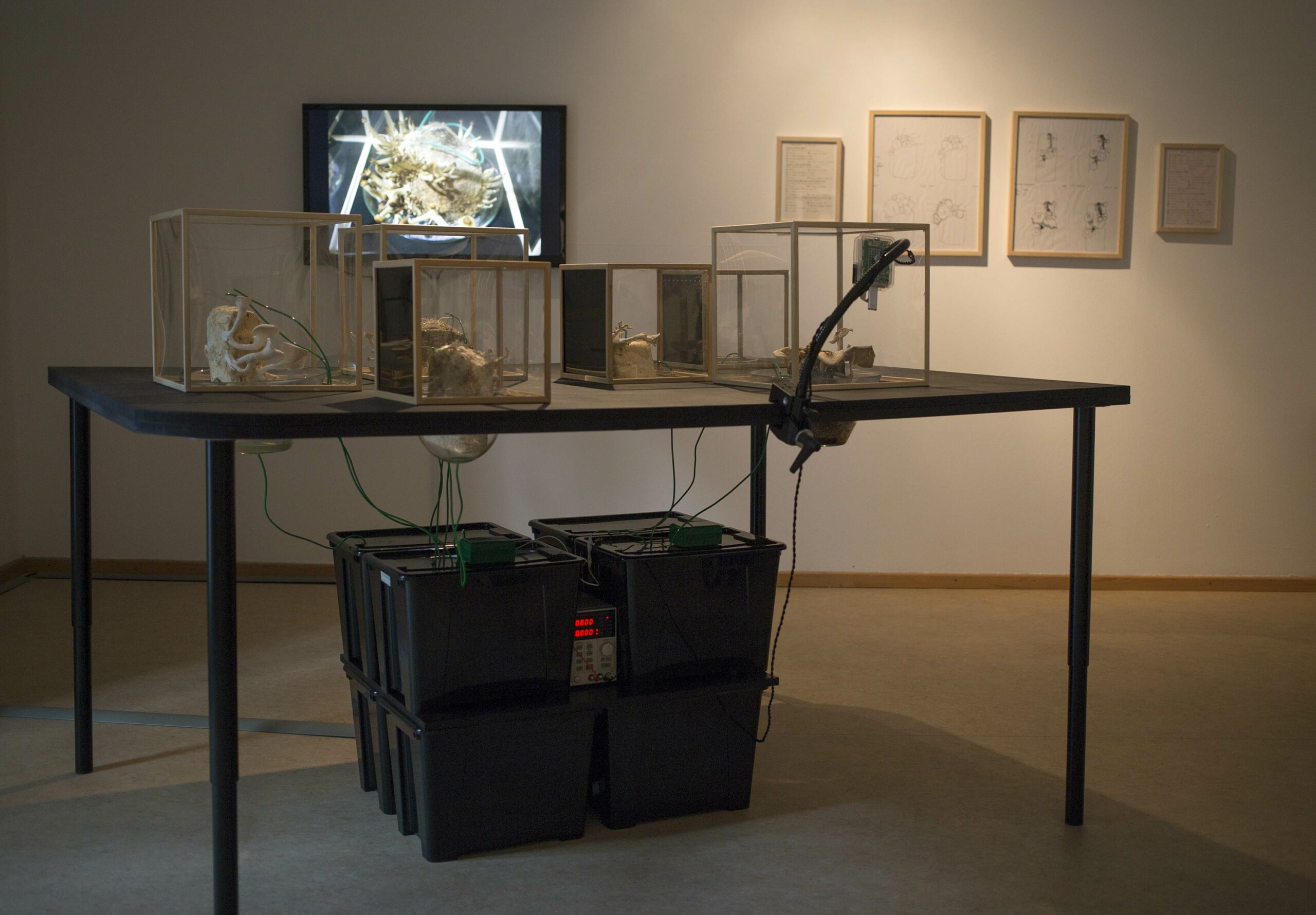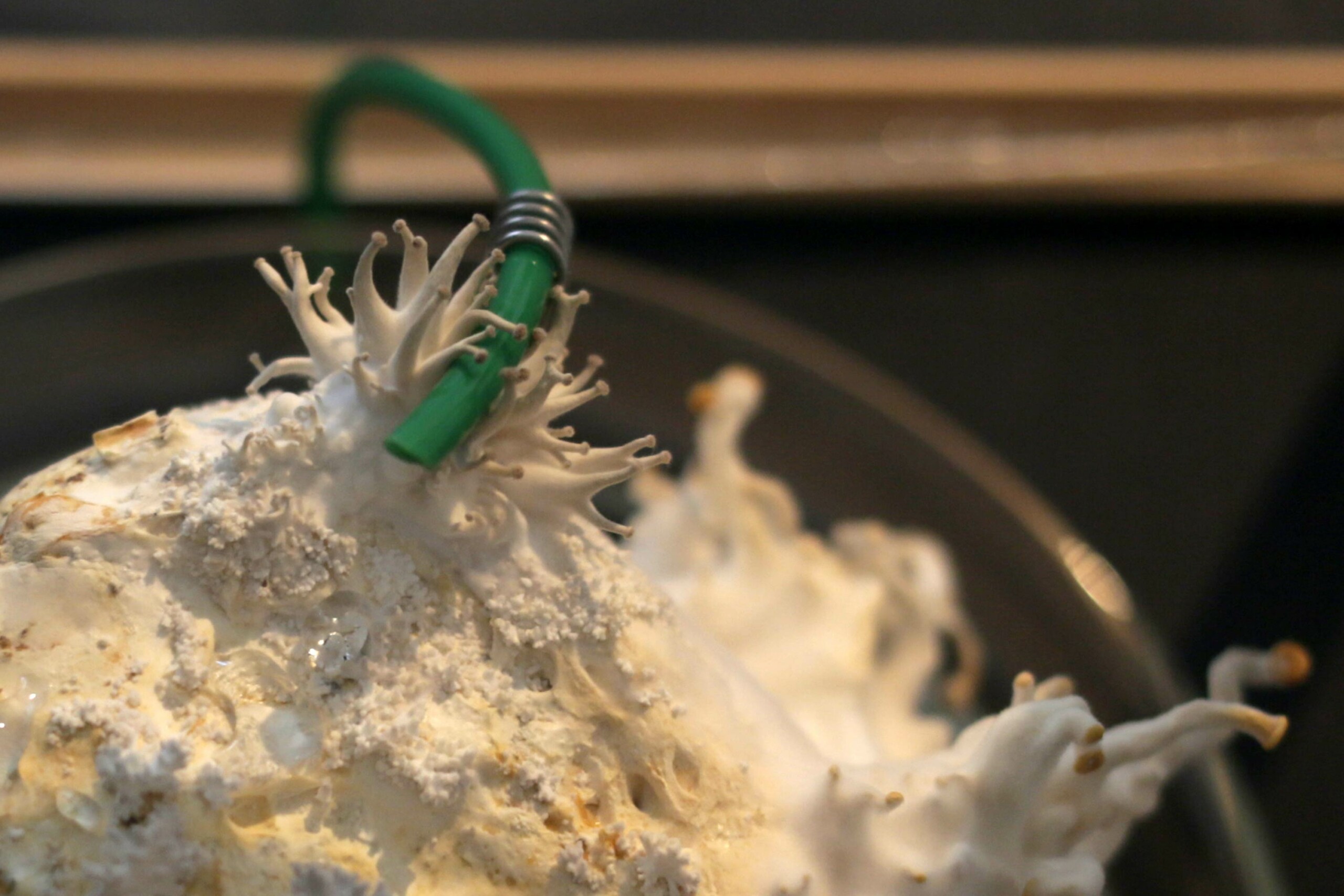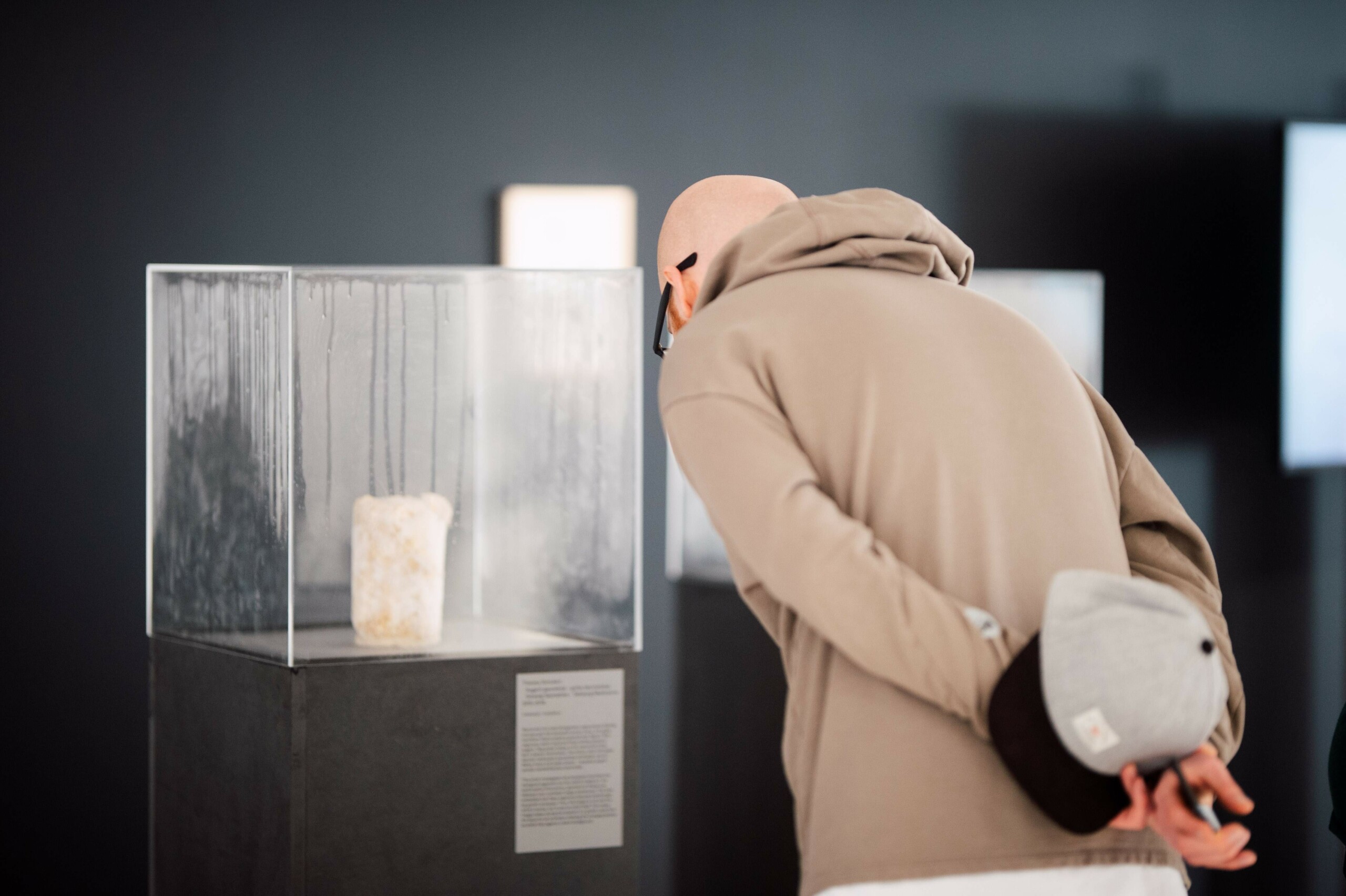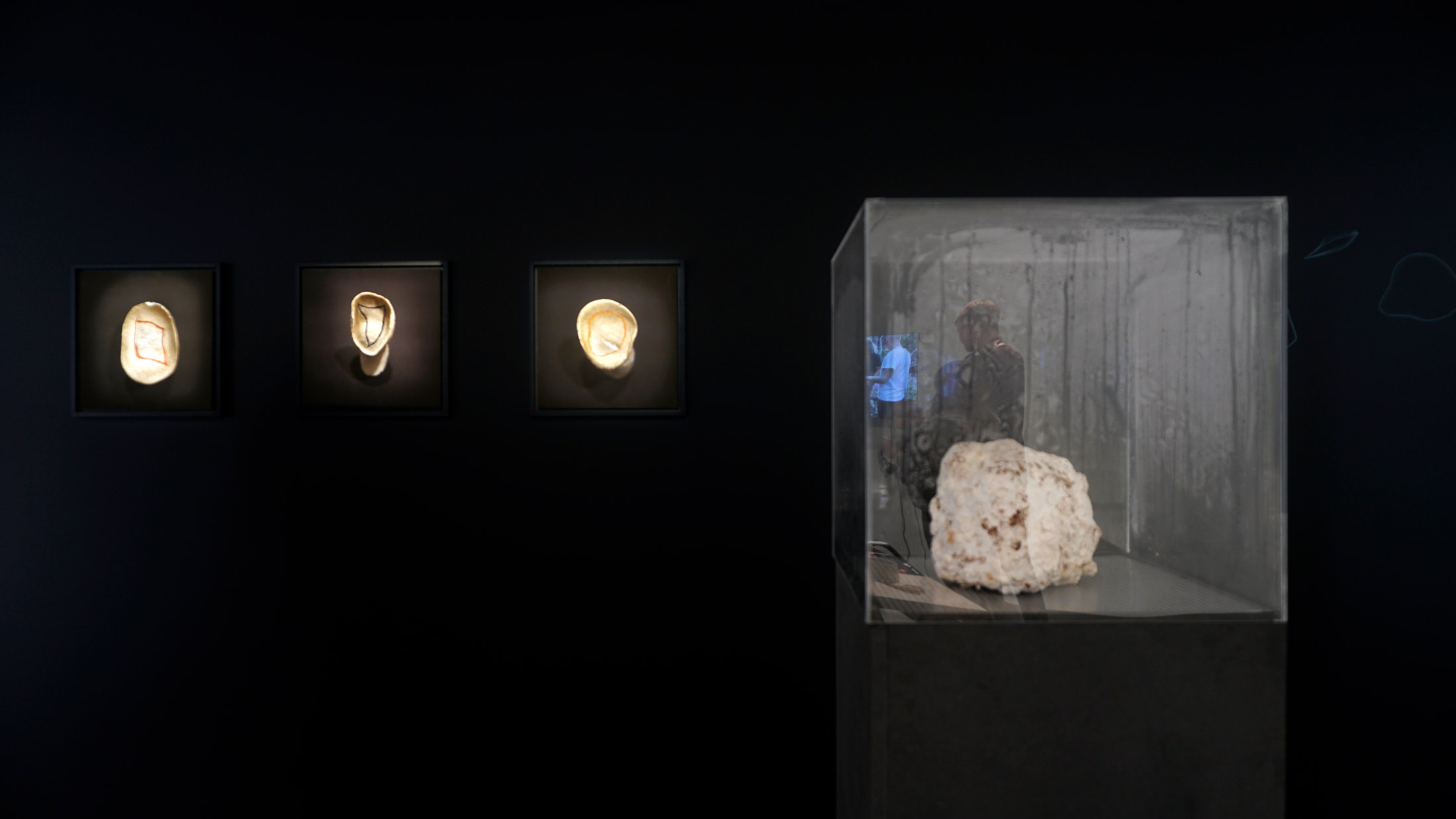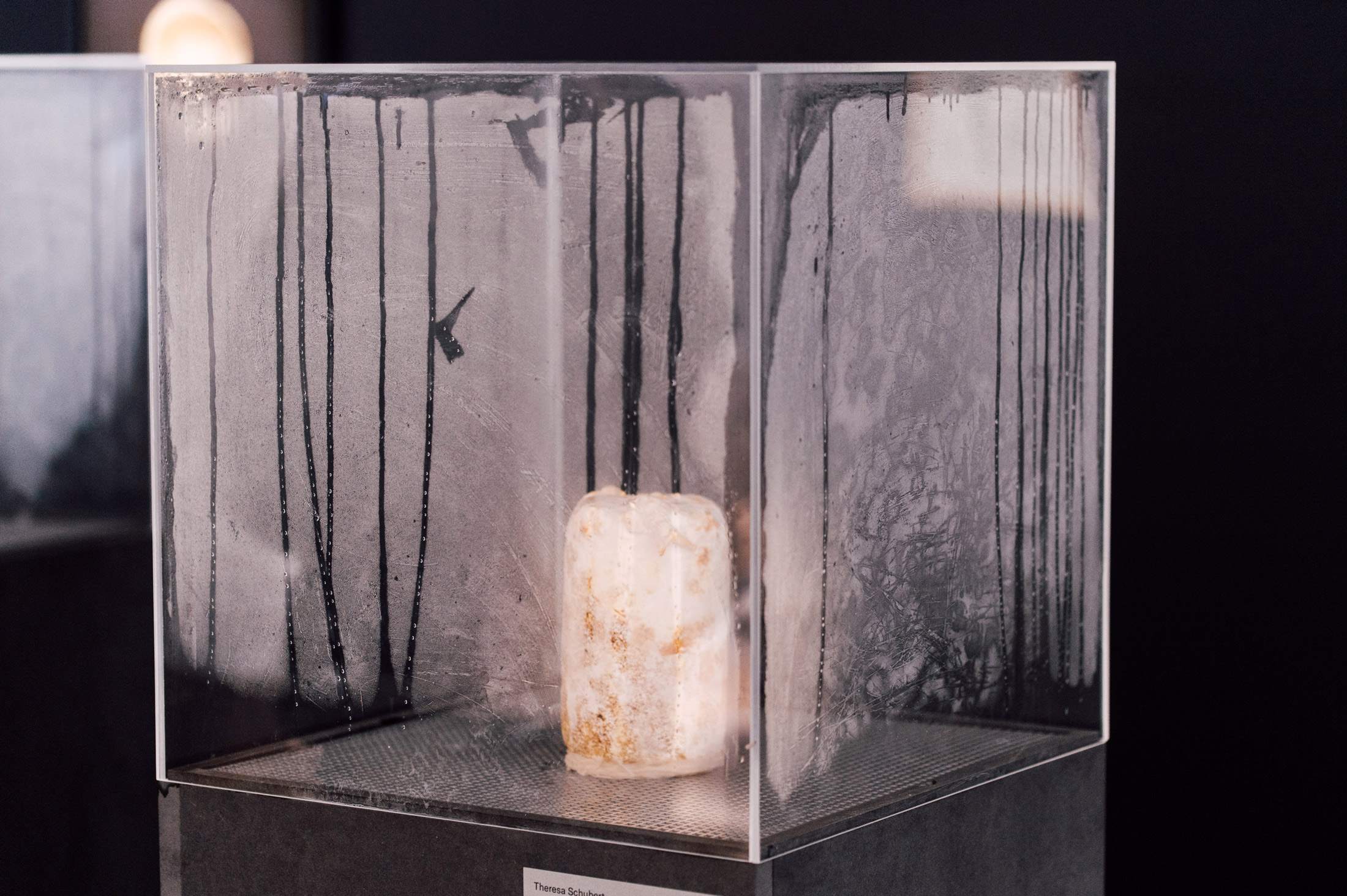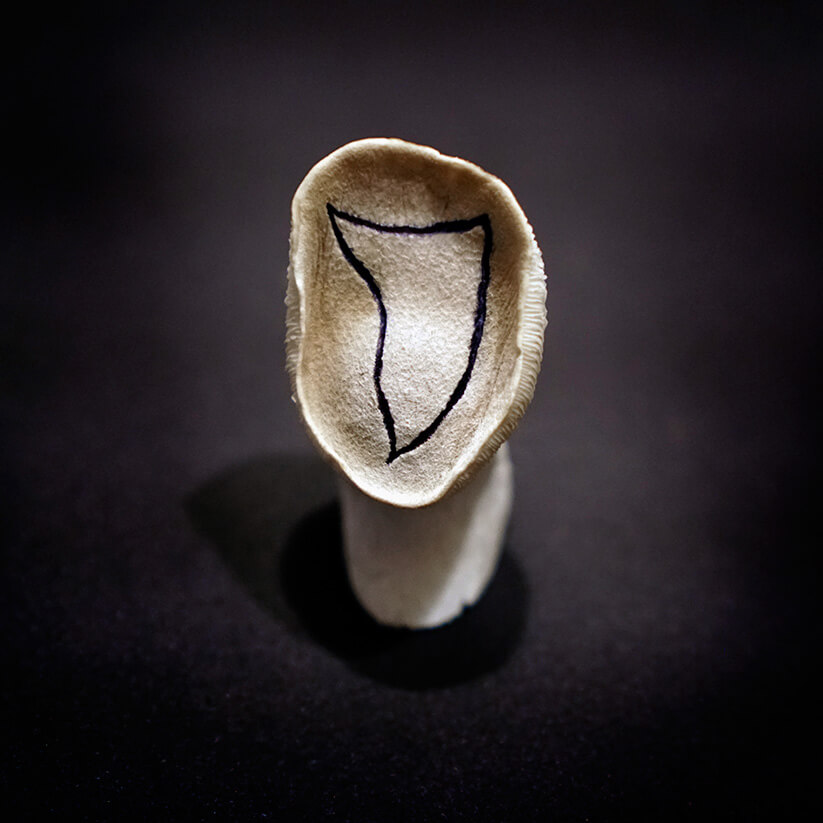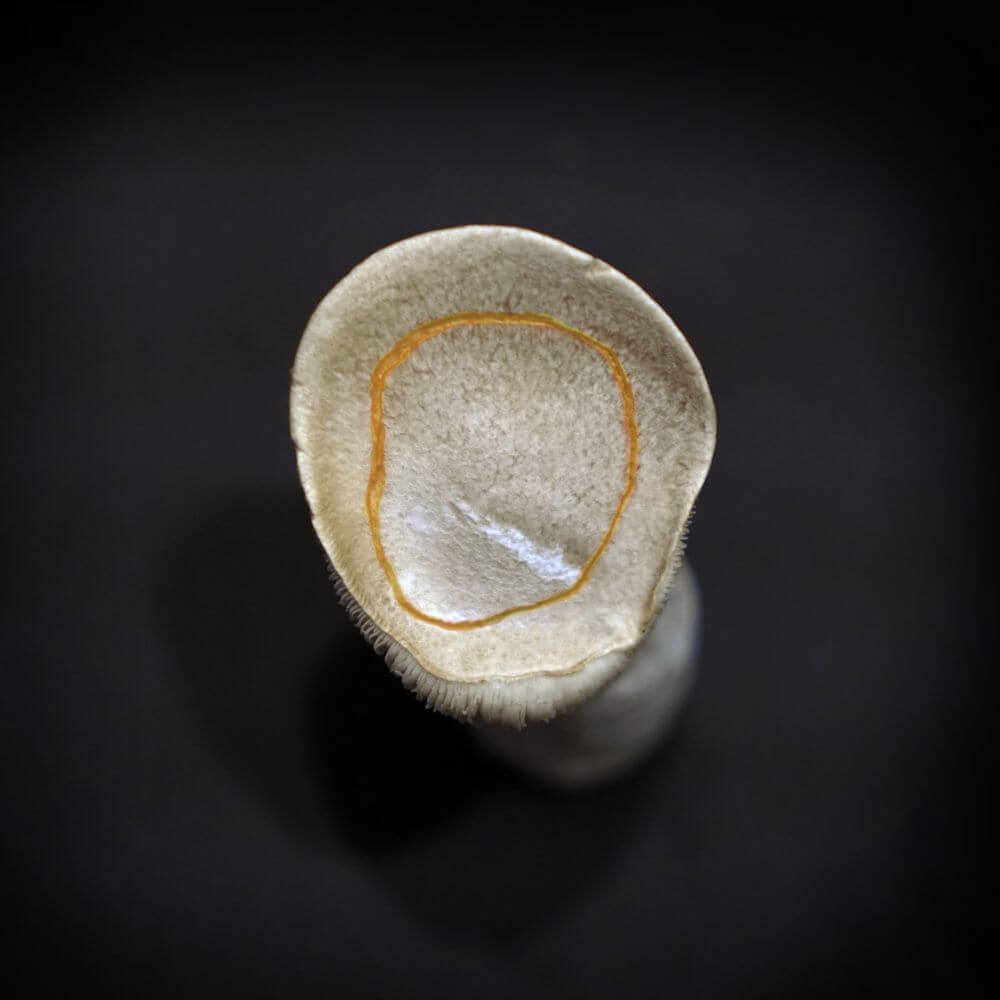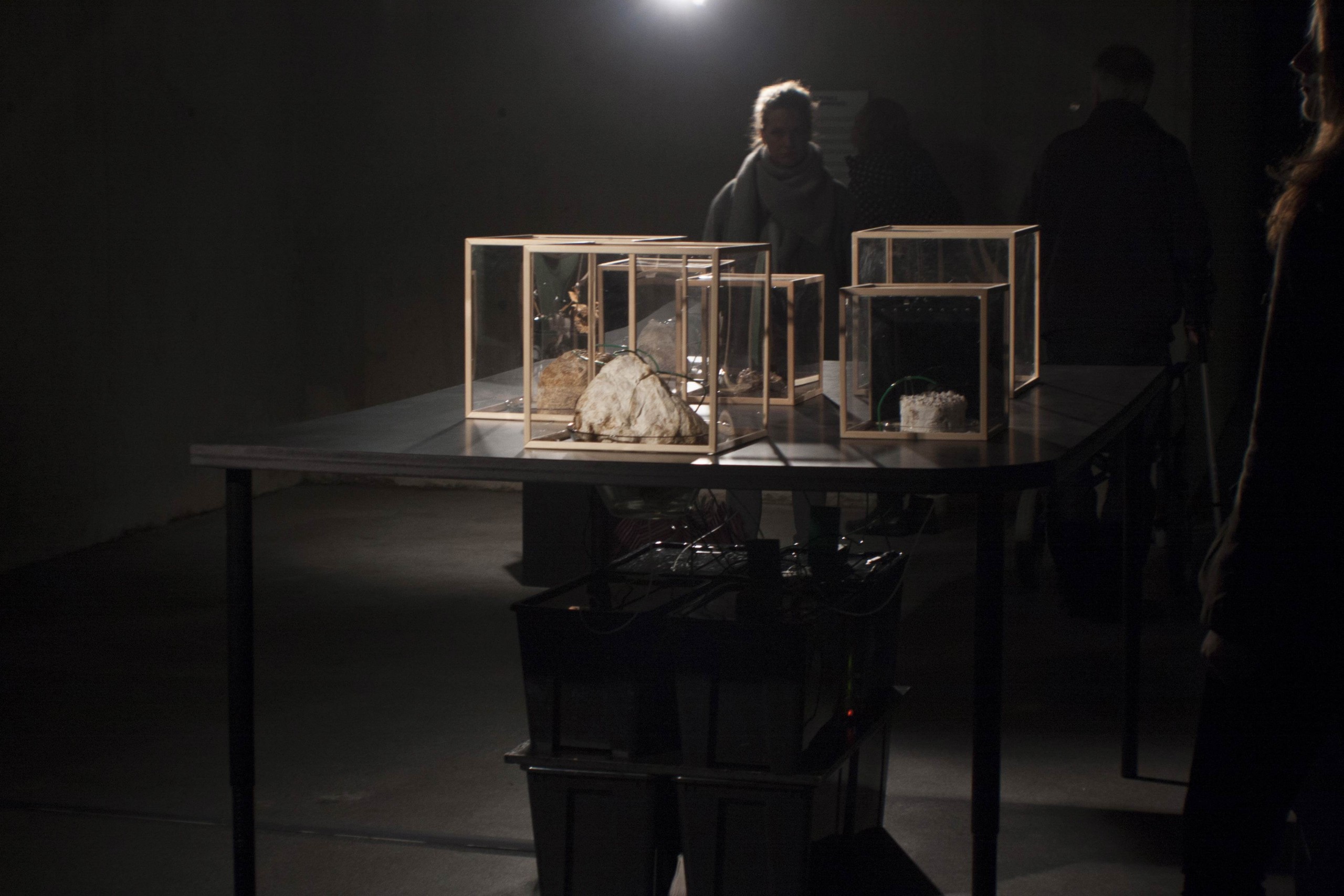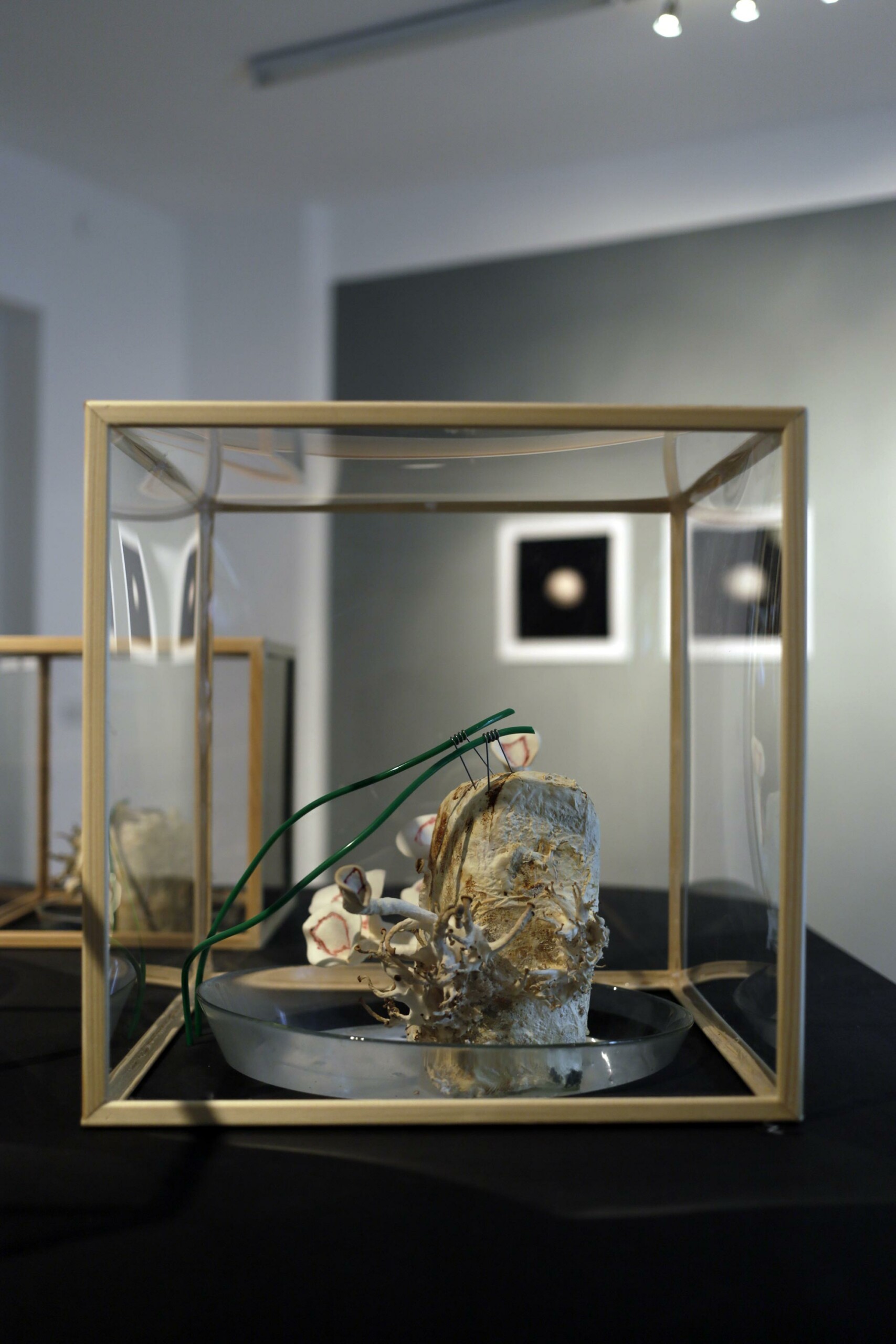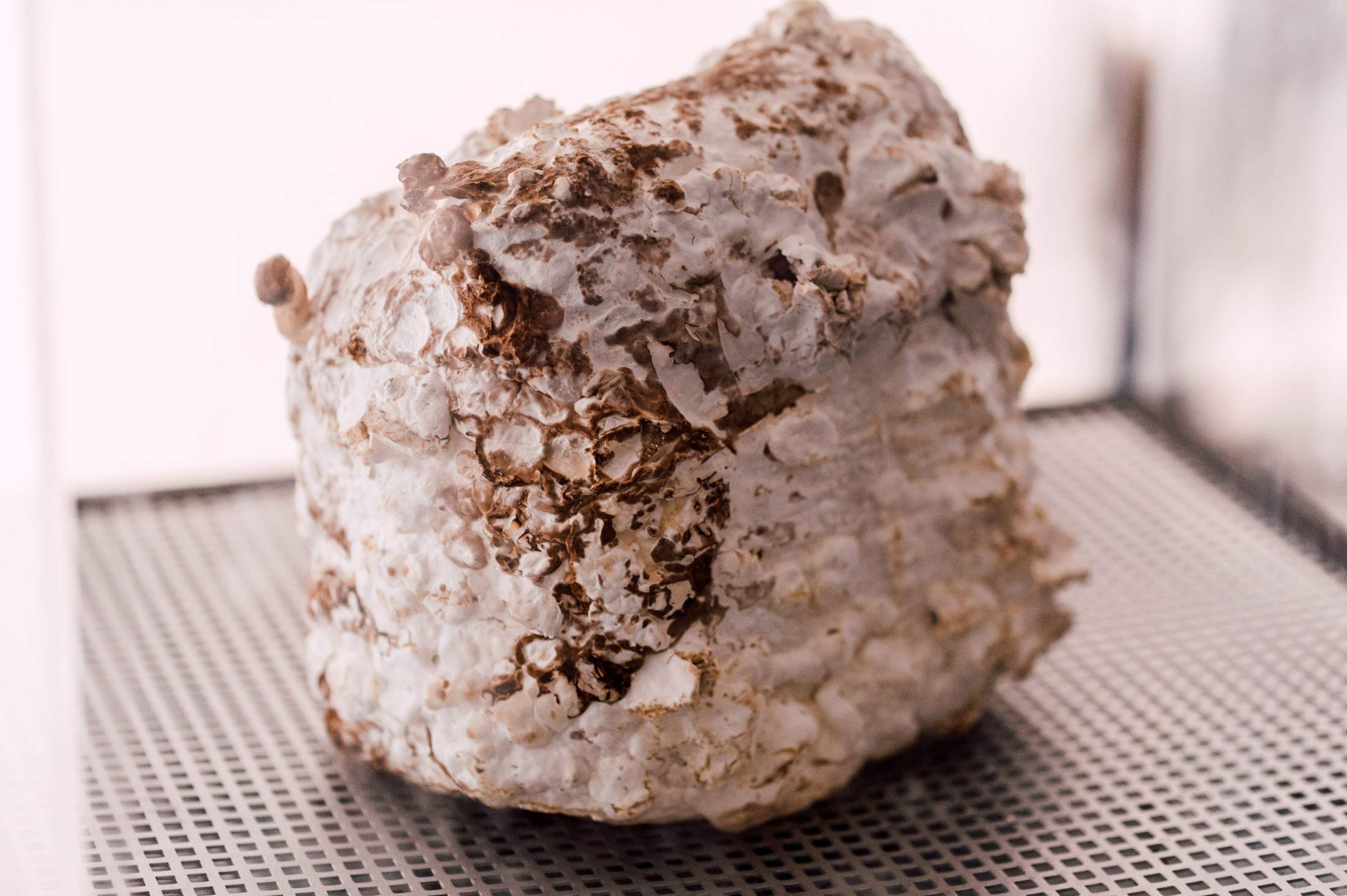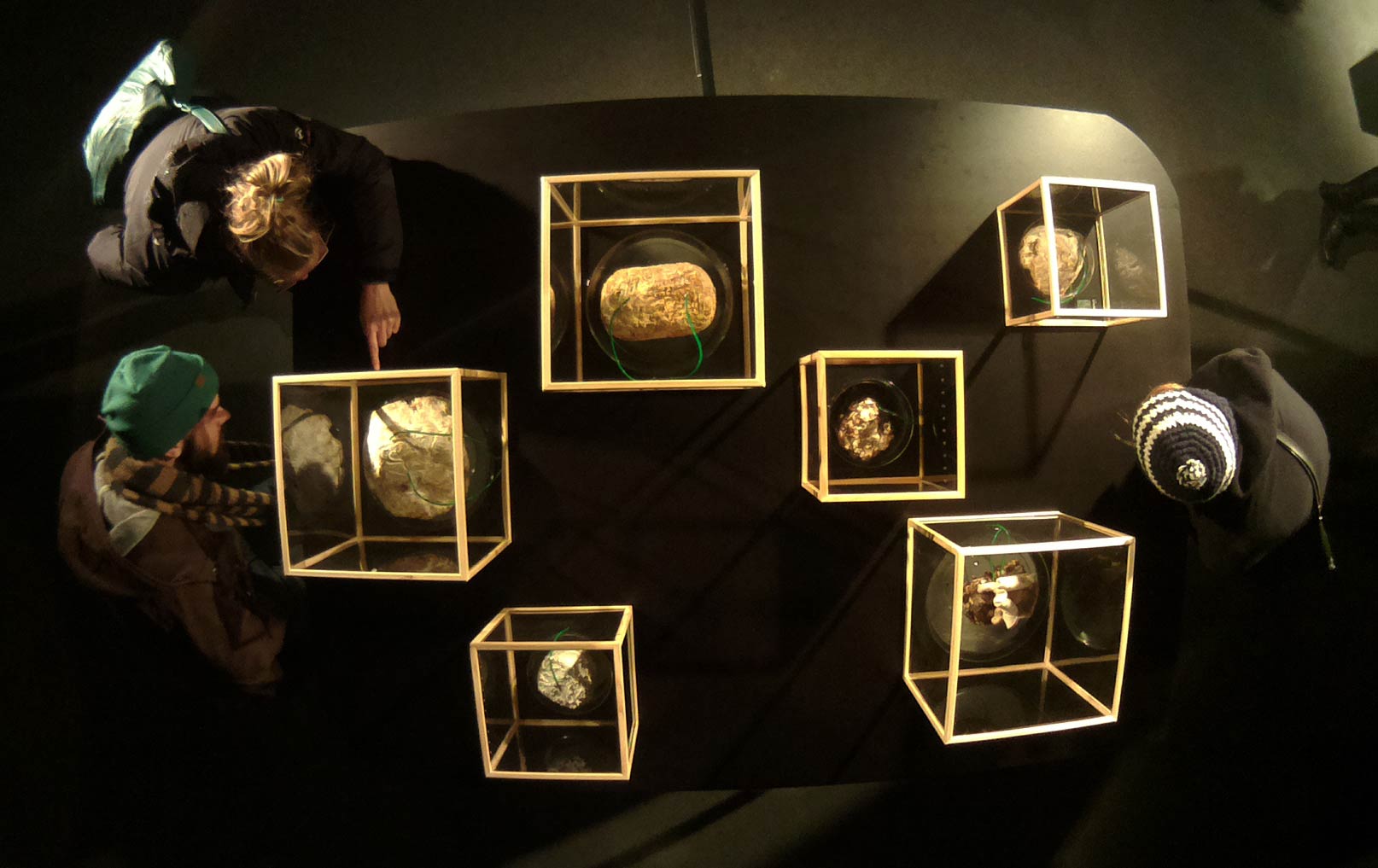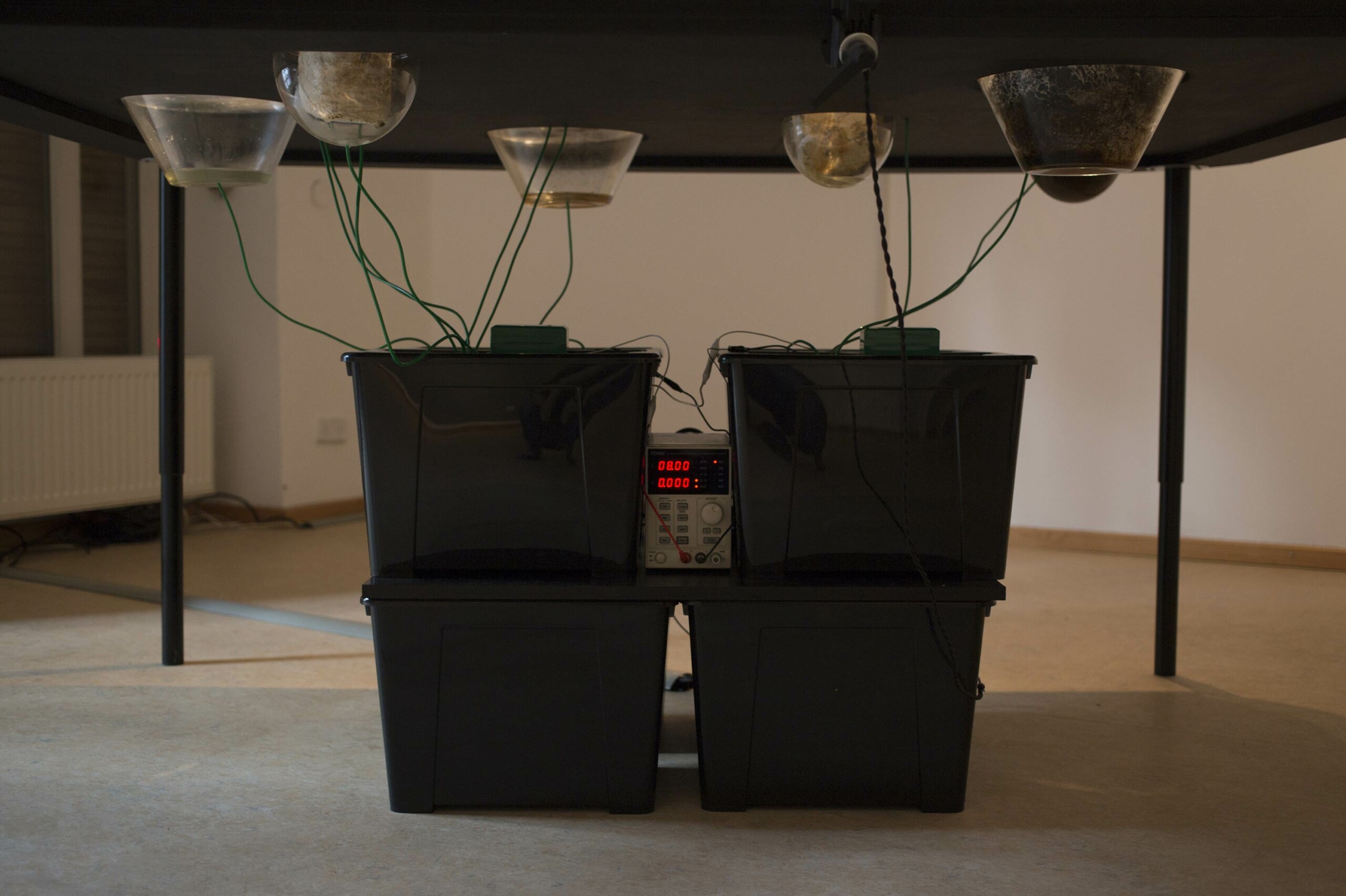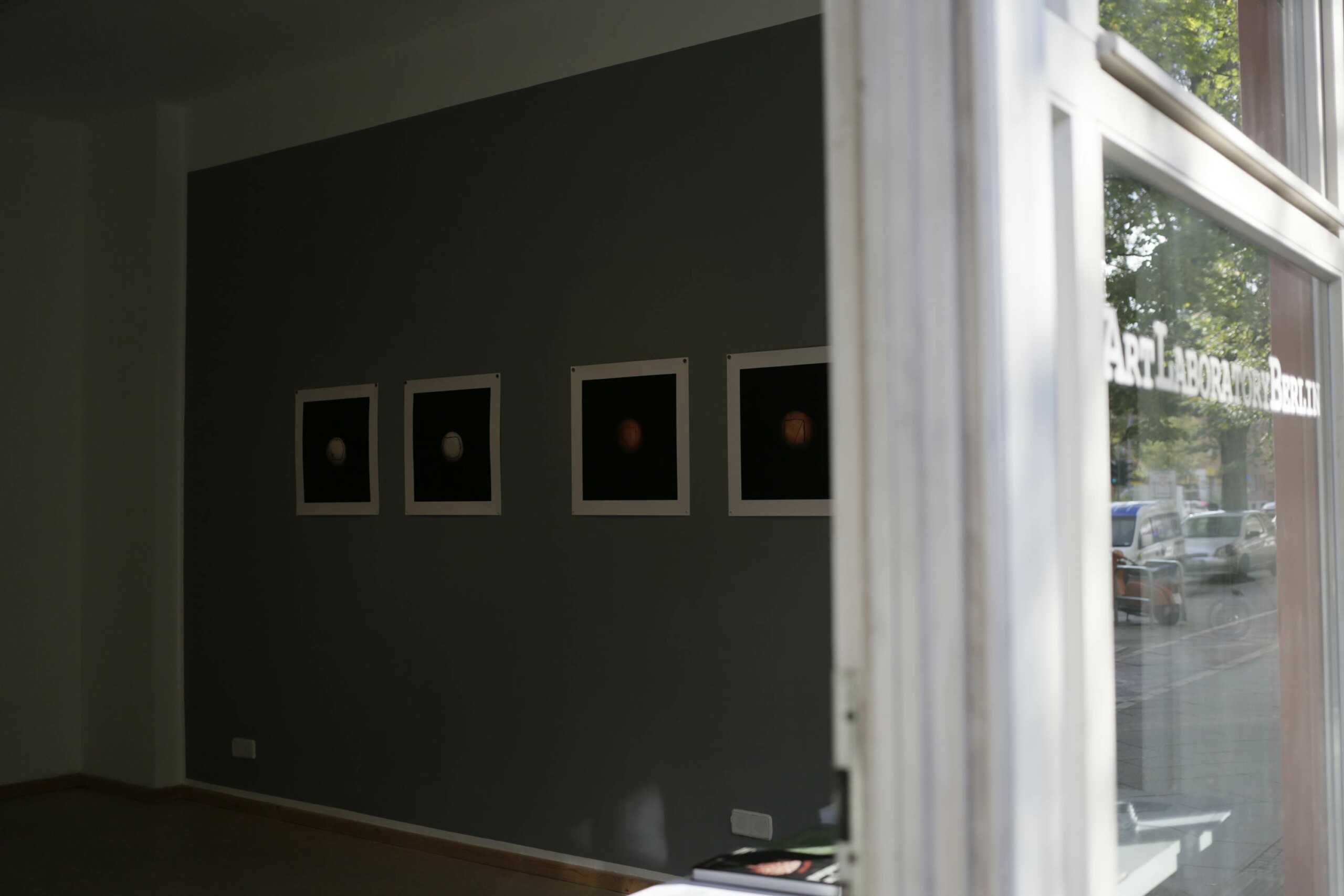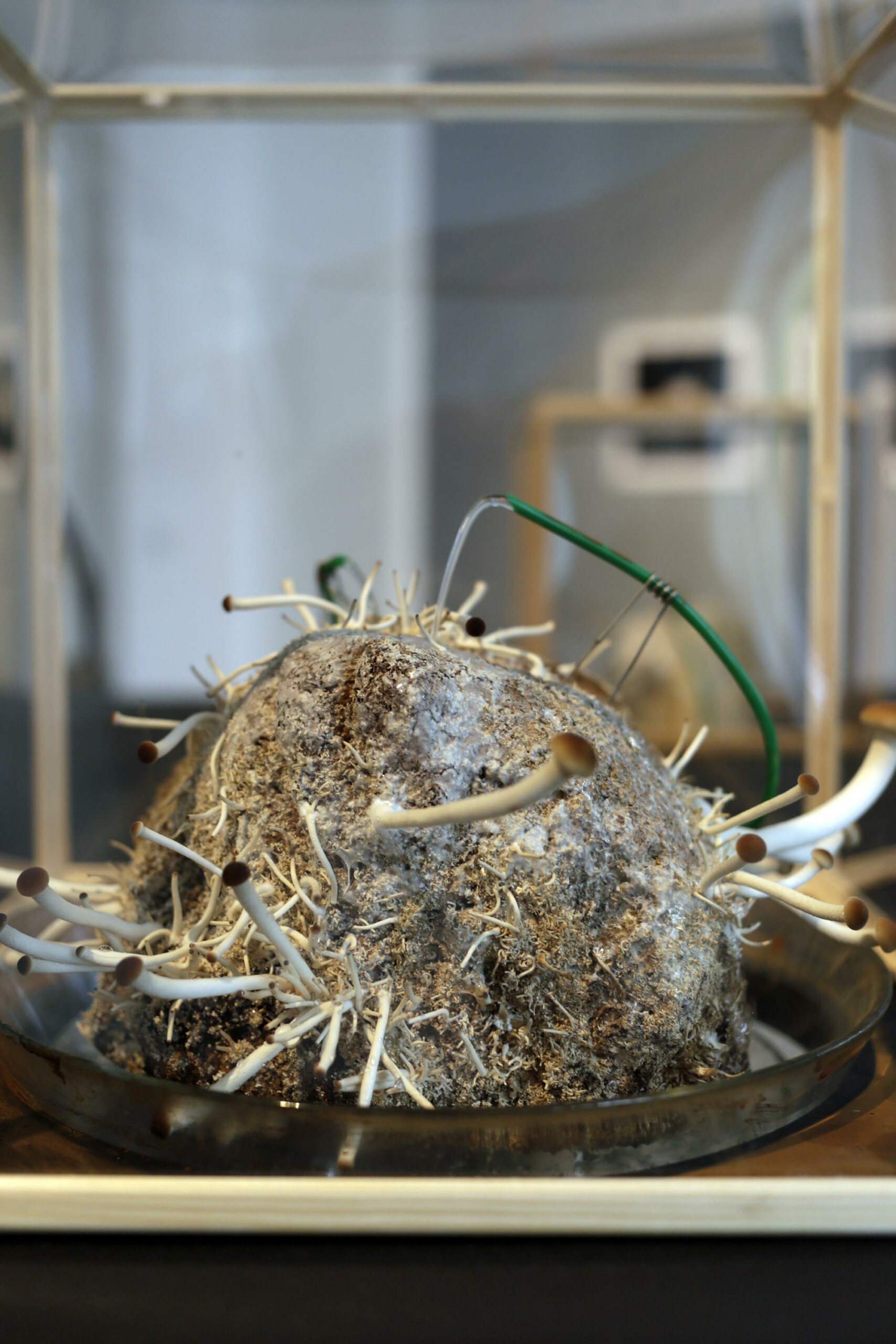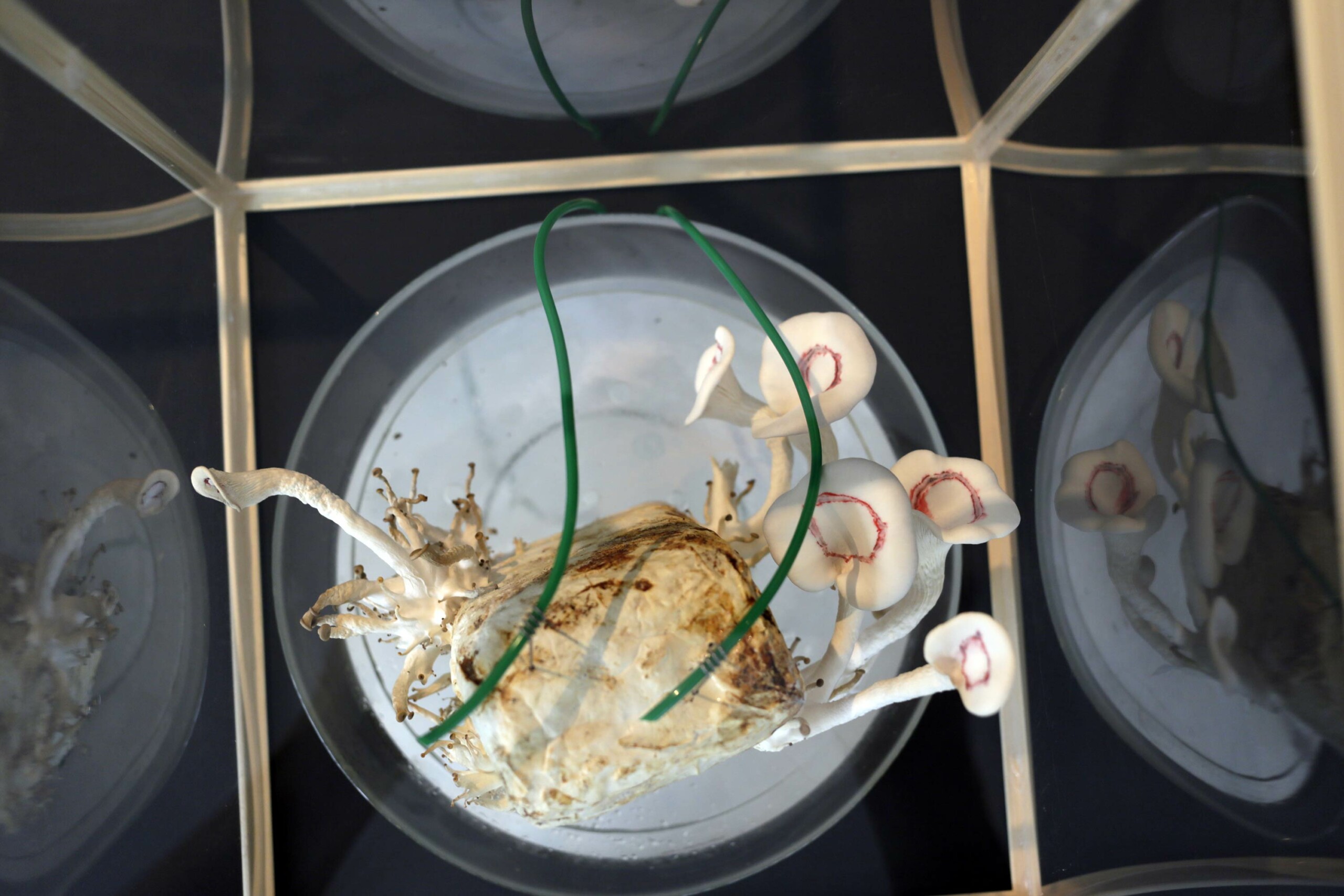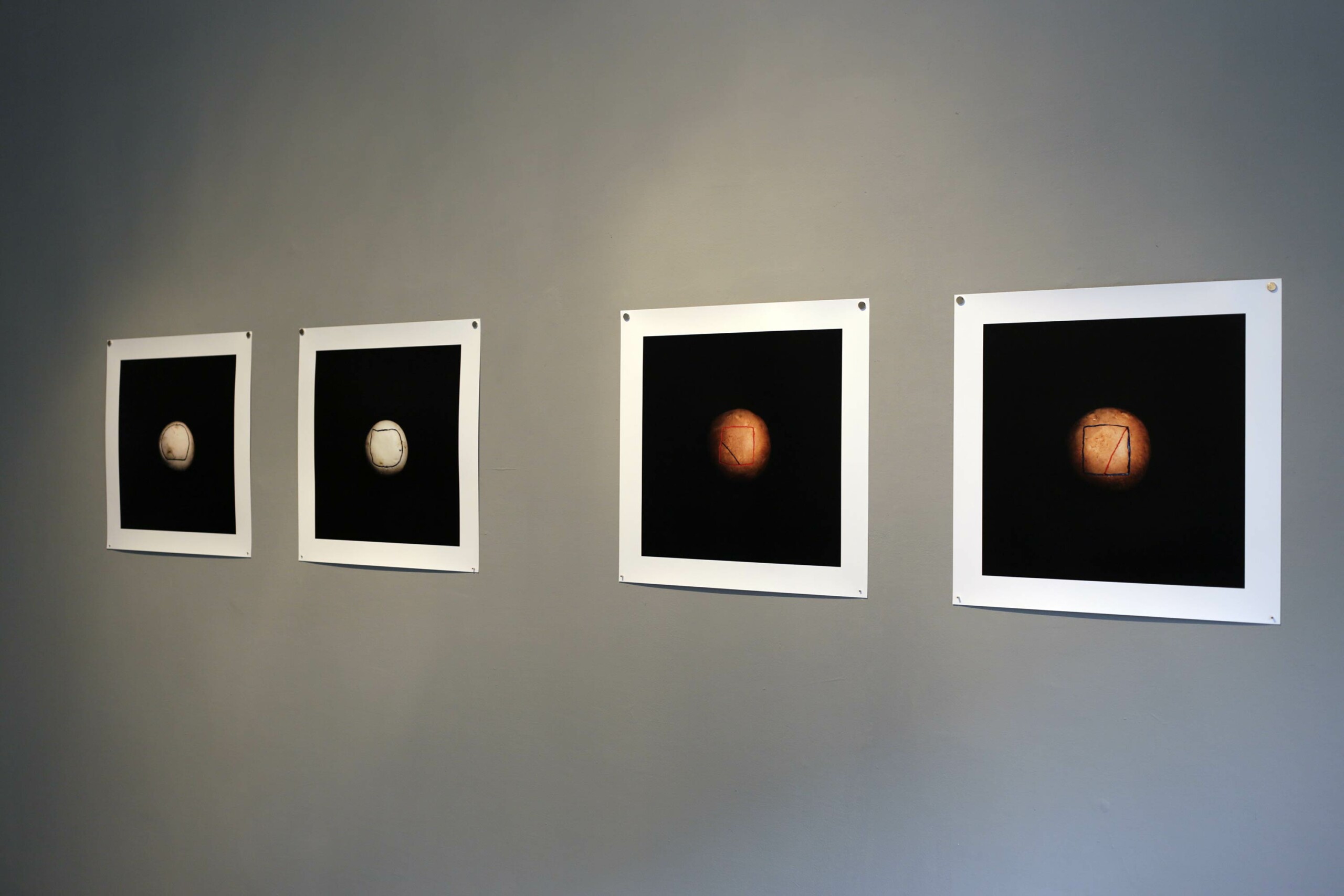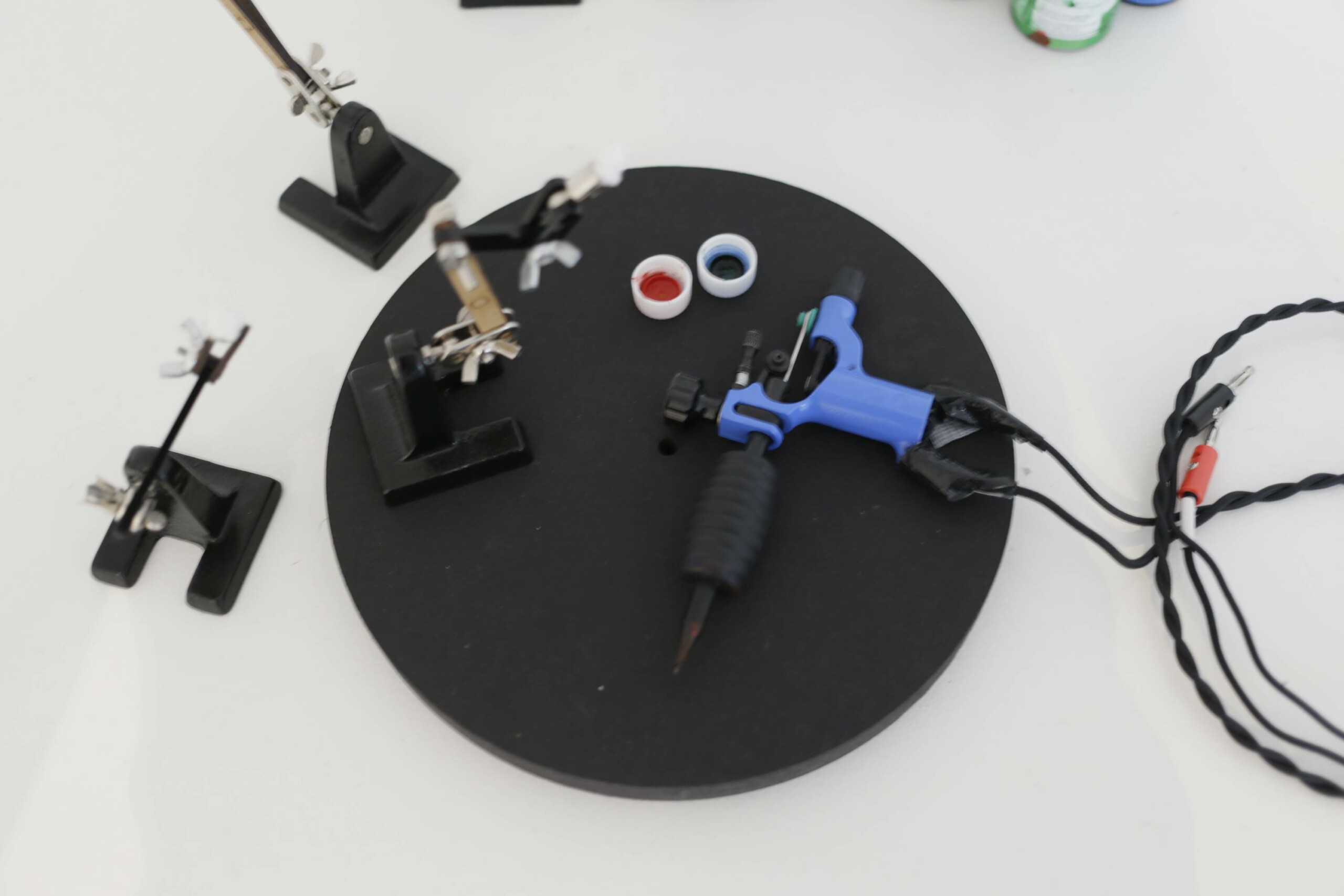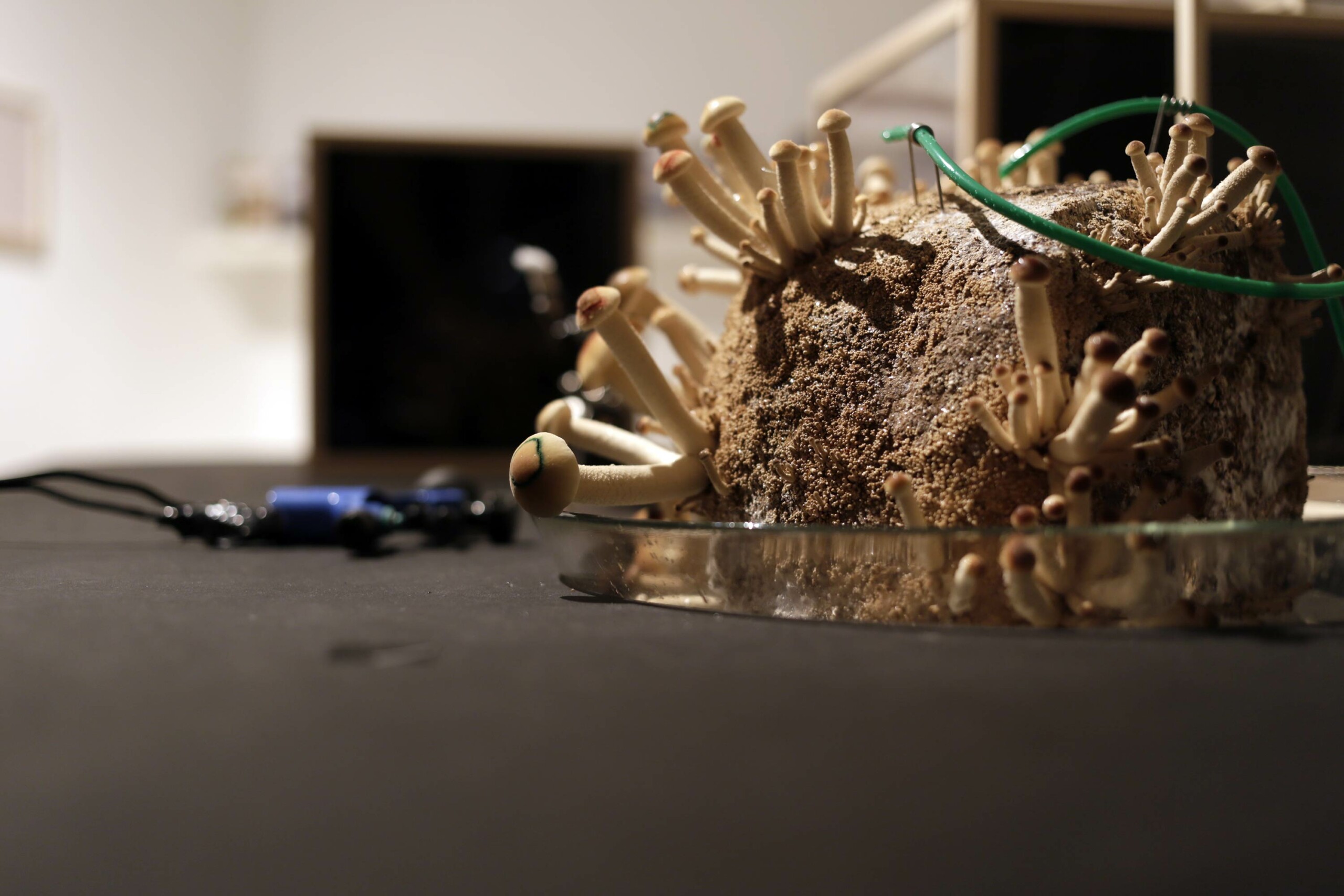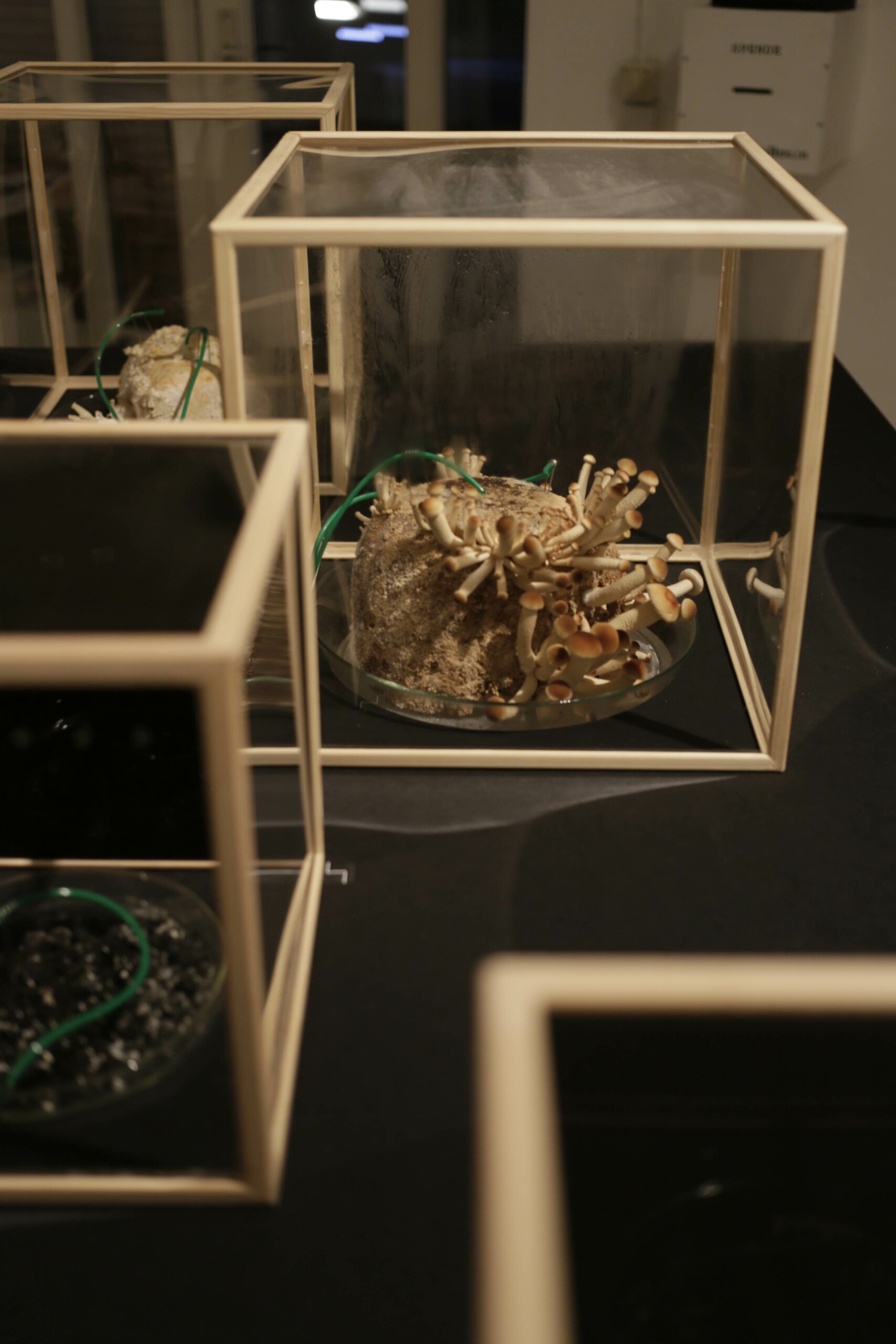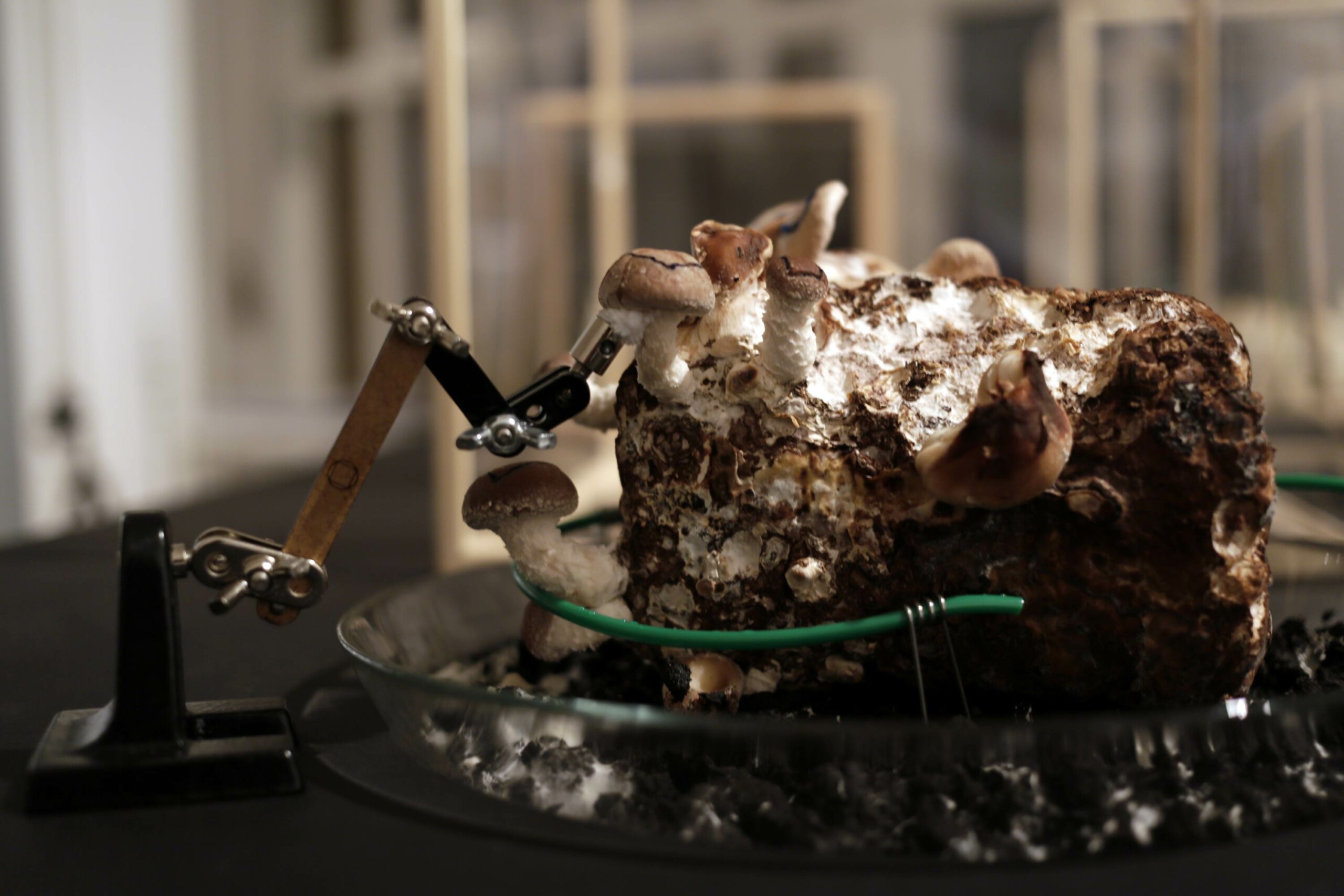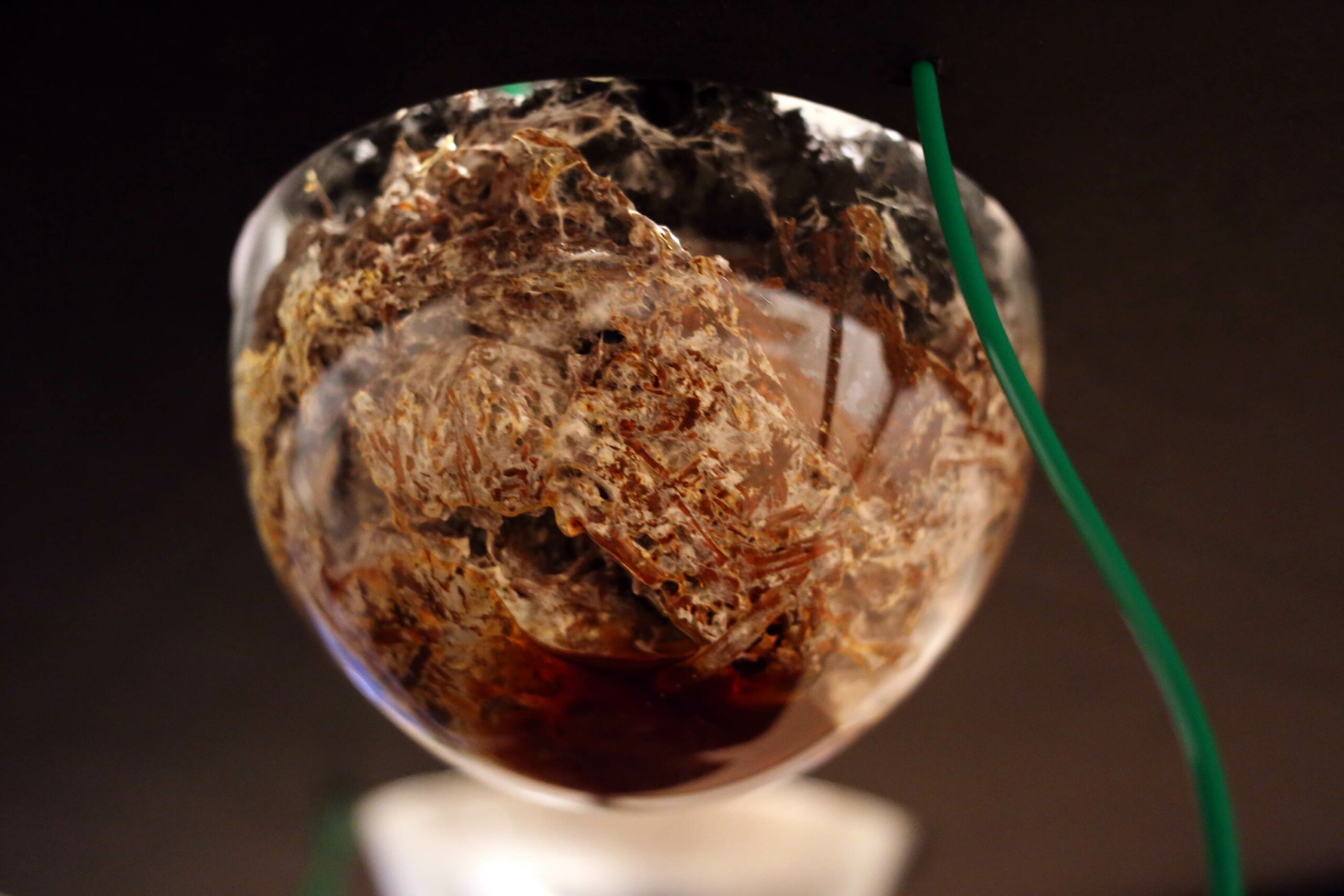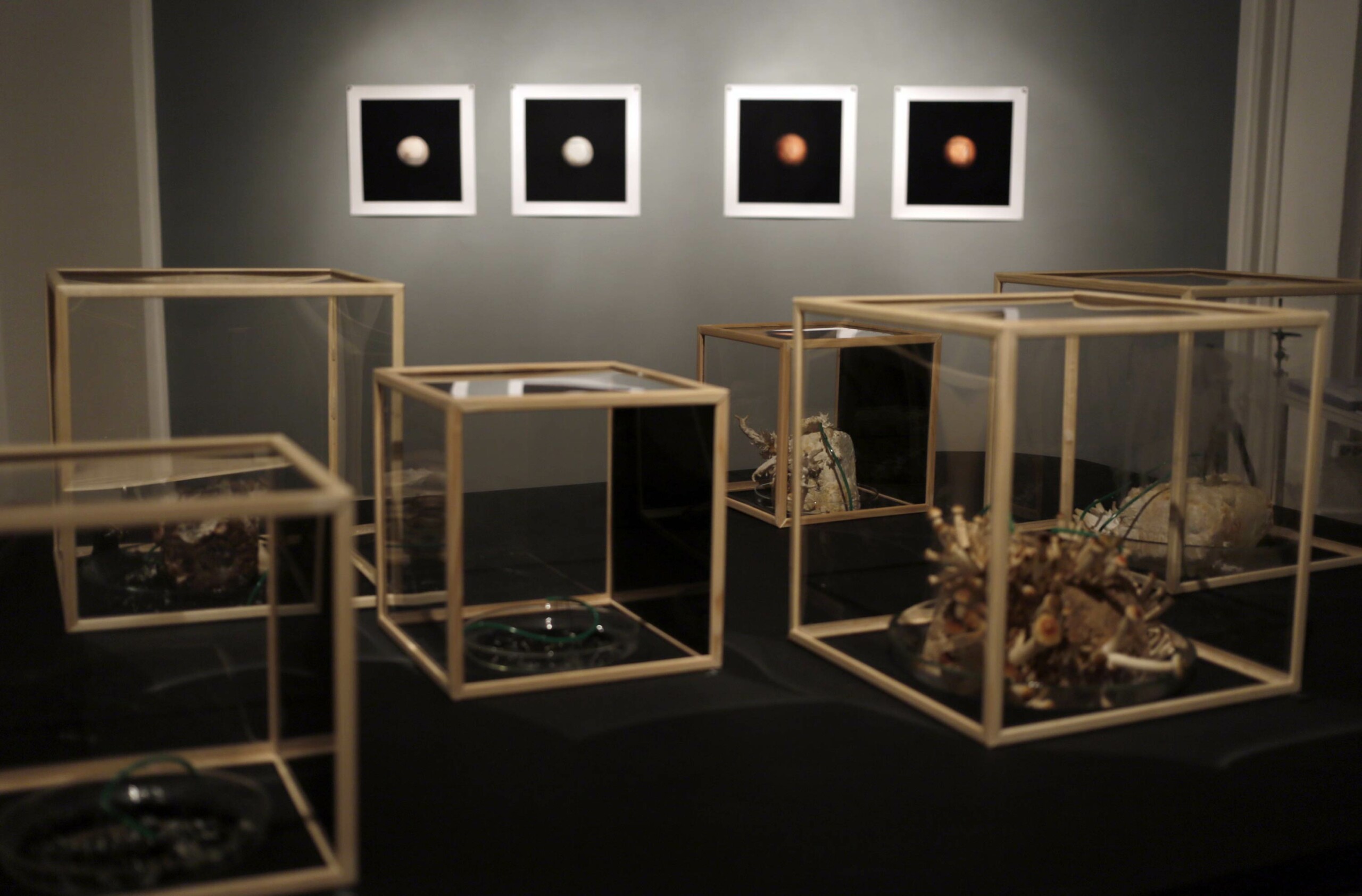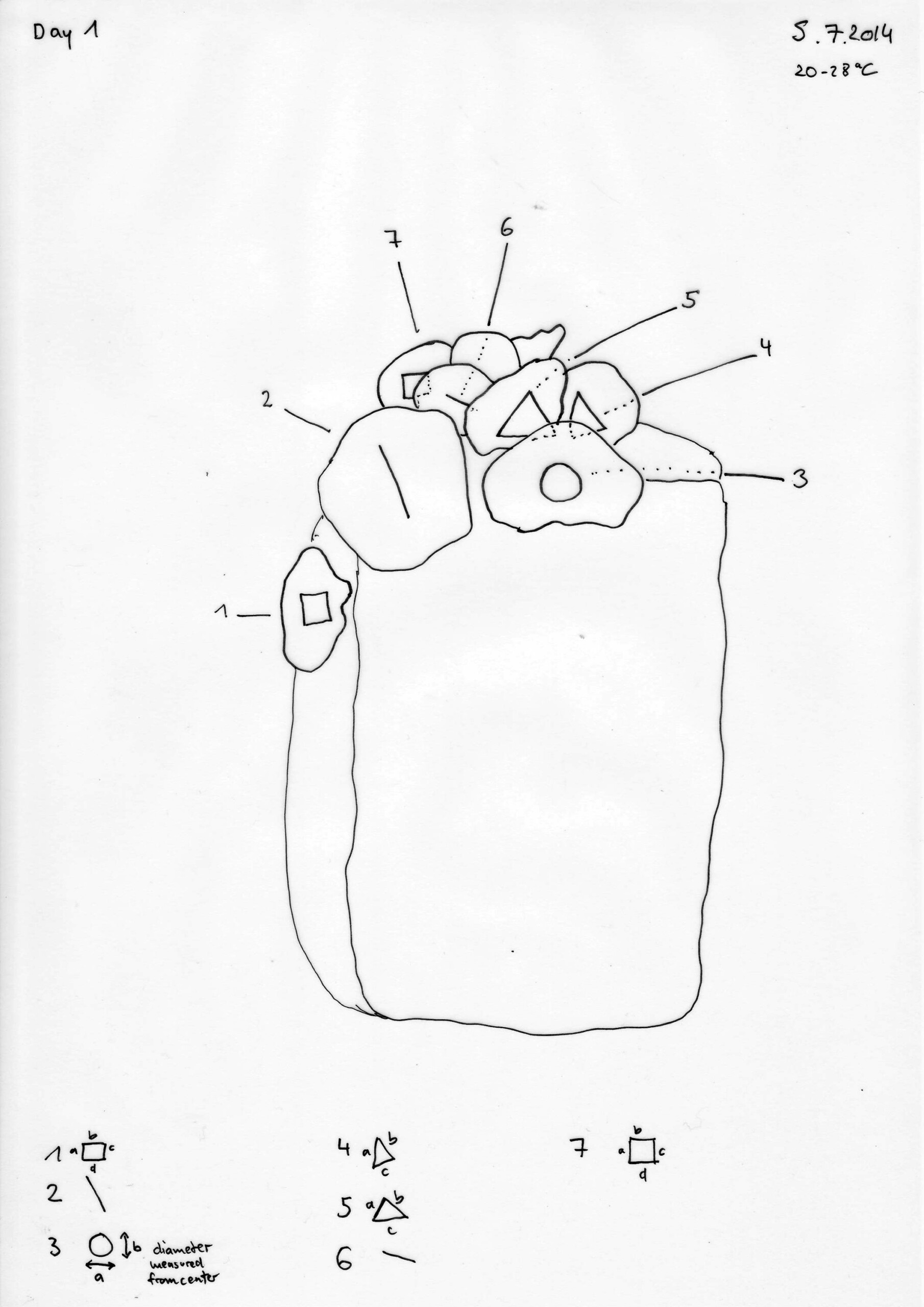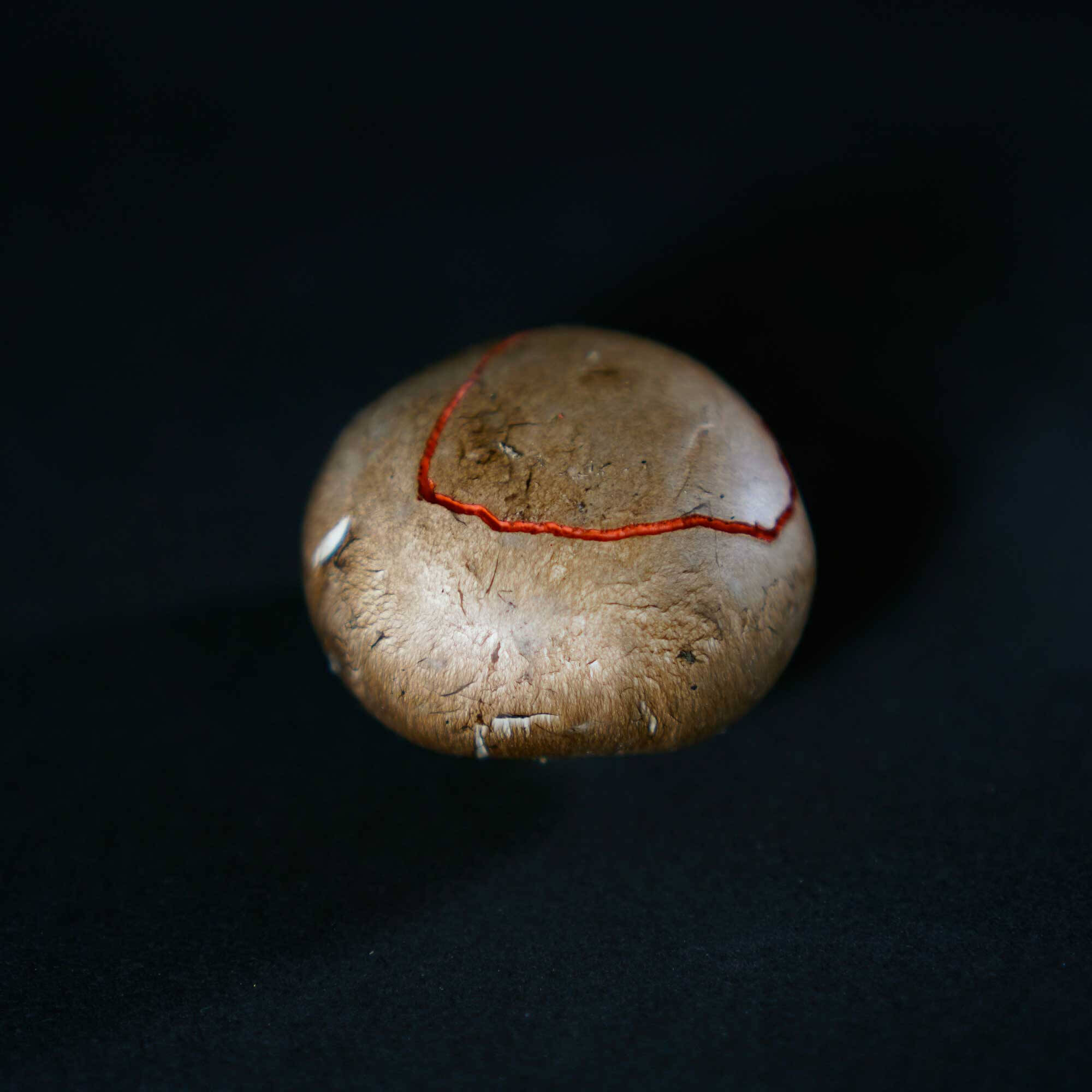Materials and media
Year
Prizes
This artistic project investigates the morphology of fungi and evolution of geometrical shapes on living and growing membranes and ultimately how images can be generated by natural processes.
“In her experimental setups, Theresa Schubert condenses simple organisms to highly complex philosophical questions. Together with the treatment of mushrooms with tattoo needles, their natural growth creates a closer proximity to that of mankind than to that of flora. Via a minimal intervention Schubert succeeds to translate natural phenomena into already underlying creative processes and to transfer them into an investigation of about growth processes of our society.” – Kerstin Godschalk, curator HB55 Kunstfabrik Berlin
The artist wants to investigate how processes inscribed into biological organisms can be used to create art – or more general a creative output. Via a performative intervention Schubert tattooes geometrical shapes into the fungi membranes. The lines embedded into these growing organisms become transformed by living processes. This is a way of using “natural computation” for the self-organization of images. The fungus is, therefore, not only the artist’s canvas, but also an artist itself. Time-lapse images taken over the duration of a growth cycle form the basis for an animation which shows the changing tattoos as white lines against a black background. By reducing it to the essence, a poetic landscape of slowly changing forms develop.
Concept: Can a square become a circle?
“Growing Geometries” draws references to old mathematical questions such as the squaring of the circle and how non-trivial visually simple forms can be when expressed in mathematical formulas. Ultimately the tattoos root in the traditional Bauhaus itself with their school of simplicity and the basic geometrical forms of the circle, the square, and the triangle. Further it is the biological answer to generative and algorithmic design methods where images are created digitally and possibilities of simulations are only limited by imagination of the creator. How can we use abilities inherent in nature to create art that goes beyond making pictures of something pretty? How to succeed in an aesthetic quest with experimental methods, artistic intervention and the biological unknown?
Process
Fungi are being cultivated. I have tested Pleurotus ostreatus, Agaricus bisporus, and Agrocybe aegerita; Lentinula edodes, Macrolepiota procera. A tattoo machine as used for human skin is the tool. The pileus is tattooed when it is still small (about 2-3 cm diameter). While the cap is growing, the shape of the mushroom membrane expands – hence the tattooed image changes as well. For the tattoos artist drawing ink or food colouring is used in the colours red, green, and blue. After tattooing the mycelium is left alone for growing, measurements of the mushroom heads and the tattoos are taken. The data is collected for analysis of the changing shapes. For the installation an automated, programmed water supply system was put into place. Also there is a custom-made observation system based on raspberry pi and a camera to show a time-lapse on a connected screen. In addition, the technique of permanent imprinting of images in membranes was important for this project. I decided to use tattoos because this method produces images that are resistant to moisture, painted shapes would become washed out by the high humidity on the fungi. The cultivation of mycelium and the choice of fungi as material underlie my interest in rhizomatic structures as a biological and sociological phenomenon, not least influenced by Deleuze / Guattari’s application of the rhizome as a metaphor for a poststructuralist model of knowledge organization and distributed organization without hierarchies. The numerous connections between root system and aboveground excrescences of a plant, this plurality call Deleuze / Guattari “plateau”. In this sense, different approaches and perspectives can be freely linked in the rhizome without regard for given structures.
Presentation
At the heart of “Growing Geometries” is an installation consisting of the mushroom observatory table in combination with electronic technologies and visual media, with optional photographs and drawings, as well as older videos of fungal growth. There is a self-developed observation system based on a networked Raspberry-Pi and a camera, which saves photos at a reasonable interval and automatically generates a video from it. The time-lapse film is shown in the exhibition on a monitor. The process is accessible via an IP on the Internet and can be controlled by me from a distance. This makes it possible to check the growth process and to forward nursing instructions to the exhibitors.
Based on that, I produced the digital animation entitled “morphological twists,” which shows only the changing tattooed geometries as white lines against a black background. For the production process, I put photos from the time-lapse into the background, which I removed again at the end. By reducing it to the essence, a poetic landscape of slowly changing forms develop.
Exhibitions
2019 Shared Habitats, MO – Museum of Modern Arts Vilnius (LT)
2019 Ars Electronica Festival (AT)
2018 “A New State of the Living” at PERMM Museum of Contemporary Art Gent (BE), November 28, 2018 – February 17, 2019 (LIVE)
2017 “Shared Habitats” at NCC Taiwan, November 2017
2016 Update_6, Zebrastraat Gent (BE), November-December 2016 (LIVE)
2015 ArtLaboratory Berlin, August-September 2015 (LIVE)
2015 HB55 Kunstfabrik Berlin, June 2015
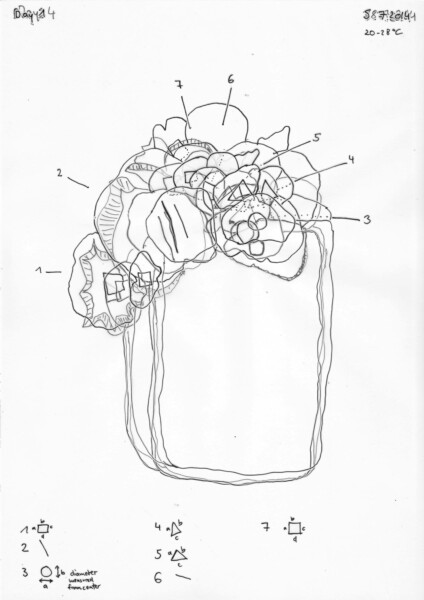
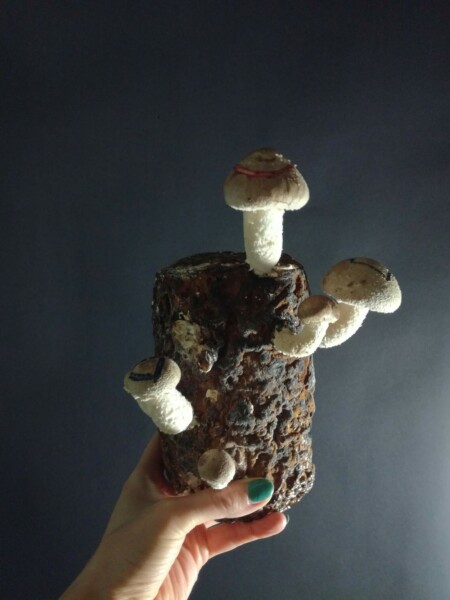
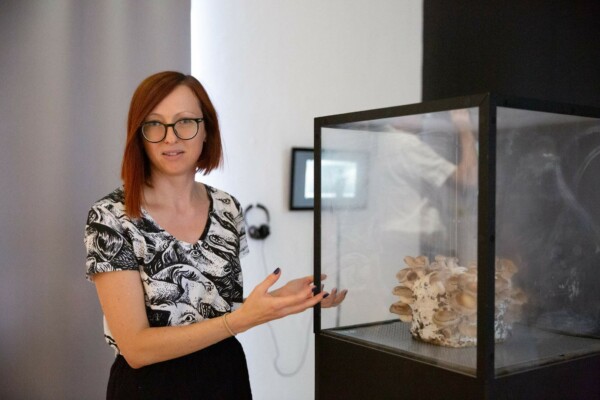
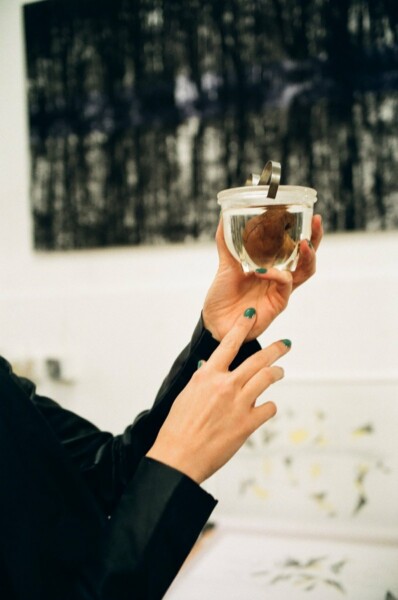
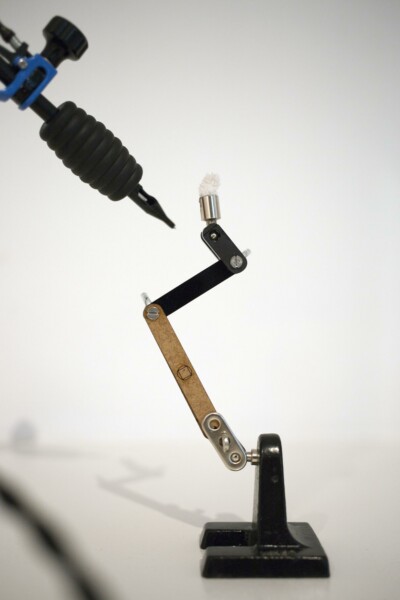
Credits
artist: Theresa Schubert
raspberry programming: Falk Röder
exhibition set-up assistance ArtLaboratory: Ann-Kathrin Meier
sponsors: Hawlik Pilzbrut, chido’s mushrooms
Bauhaus-University Weimar, Prof. Ursula Damm
